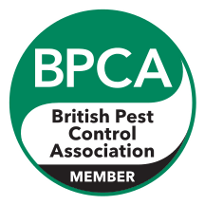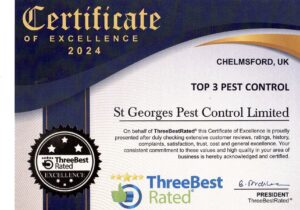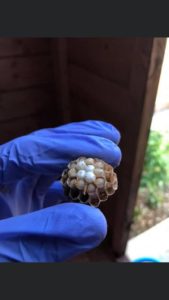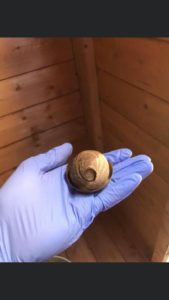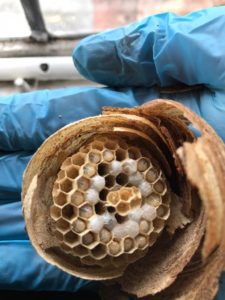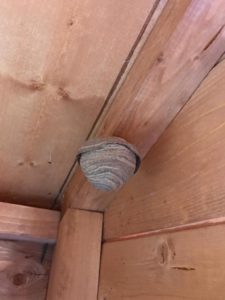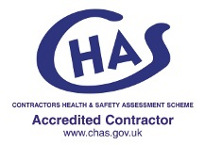Life Cycle of Wasps
There are three main types of wasp in the UK. They are the Common Wasp, the German Wasp and the large aggressive Tree wasp or European Wasp.
During April and May the queen wasp emerges from hibernation after lying dormant through the cold winter months to search for a new nesting site location.
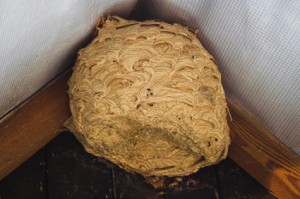
Once the site has been selected, she starts the construction of a new nest which is approximately the size of a golf ball. The nest is made of a papery material which she makes by chewing wood and mixing with salvia and weaving on to the nest.
The nest begins to form with a low number of cells within which she lays eggs. The eggs hatch into small grubs which the queen wasp will feed until they are ready to complete their metamorphosis and emerge as worker wasps.
When there are sufficient numbers of worker wasps to assist in the nest building, the queen will remain in the nest and continue to lay eggs in the empty cells. The workers continue expanding the nest and building new plates of cells. The nest expansion continues until there are 1000’s of wasps in the colony.
As late summer approaches, males (Drones) and young queens are produced. The queens leave the nest and mate with the males and then search for a dry and safe location to overwinter.
As autumn continues and winter approaches their food source starts to diminish and the wasp numbers decline and finally disappear. The only survivors are the overwintering new queens.
As the weather warms in the following spring the whole cycle of the wasp begins again.
Wasp Stings
Insect stings are common and usually cause no more than a minor irritation; however several stings can be painful and cause an allergic reaction. In the UK, insects that sting include wasps, hornets and bees.
When a wasp or hornet stings, venom is injected which causes red, swollen and itchy skin, this can be painful and could last for several days. The severity of bites and stings vary depending on the sensitivity of the person and the type of insect. In severe cases some people can have a serious allergic reaction (anaphylaxis) and this will require immediate medical treatment.
You should call 999 and ask for an ambulance if you experience any of the following symptoms following a sting or several stings:
- Wheezing and difficulty breathing
- Nausea, vomiting or diarrhoea
- Fast heart rate
- Dizziness or feeling faint
- Difficulty swallowing
- Confusion, anxiety or agitation
If stung by a wasp, wash the affected area with soap and water. Place a cold flannel or cloth over the affected area to reduce the swelling. If stung by a bee, remove the sting if possible without squeezing the venom sack and wash the affected area.
Please contact Wasp Nest Removal Essex for a solution to any Wasp Problems


